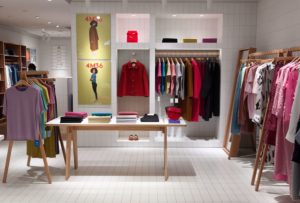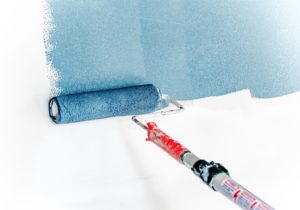7 Things We Learned When We Ran Our First Pop Up
If you run a business, you might have wondered whether a pop up would ever be right for you. A pop up shop is a temporary store launched by a brand to achieve a particular business goal, such as gain new customers. Despite the pandemic, pop up retail is increasingly common thanks to the lower investment compared to running a permanent space. And when done right, they are engaging retail experiences that leave a mark long after they have closed the shutters. Here are seven things you need to know before running your first pop up.

Benefits of running a pop up
Pop ups are a great opportunity to test a new mode of retail. You’re not there long-term, so the risks and costs are lower, and so you have space to experiment with whether a physical store would work for you, or even just gain insight on how your product and branding might perform on another stockist’s shelf.
The relative scarcity of your brand being in a physical location creates an exciting buzz that will attract new and existing customers to come down. Online-only brands may find that launching a pop up is powerful in bringing the brand to life in the customer’s eyes, in turn converting casual followers into loyal fans.
Furthermore, the chance to meet your customers in person is invaluable: you can build deeper relationships with them, ask for feedback, and make useful observations about your audience. People are more likely to become repeat customers when they feel they know the person behind the brand, so this is your opportunity to introduce yourself.
1. Start with your ‘Why’
Pop ups can be instrumental for introducing your brand to a fresh audience, debuting a new product, or simply giving your customer a new way to engage with you. They’ll work the most wonders for you when they fit into a wider business strategy. What are your short- or long-term business plans, and how would a pop up serve them? Goals related to sales, marketing, brand awareness, customer service, a new product launch, or a new area launch are all motivations to launch a pop up shop.
Decide how you plan to measure your success
Visualise what a successful pop up looks like in terms of your overall business aims, then gear your efforts towards that. Pop ups can be very resource-intensive in terms of both time and money, and so you need to ensure you’re getting a return on your investment.
Once you have your ‘why’, you’ll better be able to choose the right location, concept, and so on.

2. Location, location, location
Your choice of location is everything. Sometimes, it’s even more important than the venue. This is because location determines the accessibility of your pop up – both in terms of your audience’s literal ability to find you, and also your brand’s compatibility of the area its in and the customers that frequent it.
Location is a form of brand positioning: it’s a statement in and of itself and it can make the success or failure of the pop up. Down to the neighbourhood you choose, and even down to the street, make sure you select the location that’s right for you.
Choose high footfall
Some brands have a dedicated audience that will follow them to the ends of the Earth, but it never hurts to be in an easily accessible location with high walk-by traffic. When we held our very first pop up in BOXPARK Shoreditch, we were confident about the footfall because we were within a popular retail destination. We were also about to make observations about the type of people who walked through our doors: shoppers, local residents, tourists, and employees from nearby offices.
Check out the area before you commit, and be extra vigilant. How many people are walking by and what are they doing? Are they in a rush, or are they getting lunch? Are they already doing the activity you’d want them to be doing if you had a pop up shop there? We once turned down an incredible space in a south London as, despite being situated in a busy central station, we knew we couldn’t depend on early-morning commuters to stop and pop in, and the foot traffic was likely to spike and drop throughout the day.
Speak to local shop owners to get a sense of busy periods and customer behaviour. Also take a look at the types of shops and establishments in the area, as this will give you an idea of whether your brand will resonate with the audience likely to pass through.
3. Plan, plan, plan
Pop ups are a huge exercise in project planning because there are so many moving parts. Once you have secured the location and dates, essential organisation of the pop up itself includes management of logistics, furniture, assembly and disassembly of the shop, staff, and stock maintenance. You also need to co-ordinate any marketing and PR activities. Start prep early and include as much structure as you possibly can.
Prepare for the worst case scenario
Visualise all eventualities and plan how you can mitigate against the worst case. During one of our pop ups, there were tube strikes on some days, which meant people couldn’t easily reach us. Another time, our entire team caught COVID and we had to close early. As a backup on both occasions, we created an online ‘Edit’ featuring the same products from the store, and made sure it retained the same refined, curated feeling customers would have got at the pop up.
Do as much organisation as you can before the pop up starts as you’ll likely be low on energy during it. If something goes wrong, it always helps to have something to fall back on.

4. Design your customer’s experience
Decide what experience you want your customers to have – what value you want them to leave with. If the purpose of your pop up is to launch a new product, immerse them in all its best features. If you want to introduce your brand to a new audience, how can you make the experience hyper-memorable? Design the pull of your pop up: why should your customers and passers-by drop in?
Establish the concept of your store. If you operate mainly online, the chance to bring your products to an IRL audience could seem like an appeal in itself. Think bigger than this. Try to create a unique, interactive and engaging experience that the online can’t compare to.
For example, a haircare brand might also offer in-store consultations; a candle company has a dozen scents at its disposal to draw in shoppers; as a homeware brand, you might invite visitors into your ‘living room’. Bring your brand to life to make shoppers want to swing by your store instead of shop online.
5. Be prepared to move things around and learn on the go
After your first few customers, you will likely notice that some things in the store aren’t having the impact you thought they would. That’s normal. Be prepared to re-shuffle – that’s the beauty of seeing people in real life. You can see what people respond to and how.
When we hold pop ups, we usually move around furniture and products to experiment with what works best. Chatting to your customers will also give you insights into what they expected from your shop when they walked in. Take notes as there are always improvements that can be made next time.

6. You don’t have a have a huge budget
Sometimes less is more – get creative. Make a moodboard of some of your favourite stores, taking stock of how they look and feel. How can you recreate that with what you have? Try to repurpose furniture you already own, and maybe, if it works for your brand, lean into a minimalistic aesthetic as it may let the product itself stand out most effectively. Don’t underestimate the power of paint and wall vinyls, and be prepared to DIY!
7. Manage your energy
Pop up shops are exhilarating but incredibly taxing. If possible, schedule time off for afterwards, and if you’re running it for longer than a week, try to schedule breaks during it. When we ran a three-week Christmas pop up, we were closed on Mondays to give ourselves a breather. If you can, enlist volunteers or staff to manage the workload.
Remember that the rest of the business will still be running while you’re in the store. Make provisions for all operations you won’t be able to deal with while you’re at the pop up (e.g. with an Out Of Office email responder or by letting customers know about changes to order dispatch times).
Enjoy the process – and expect to feel exhausted afterwards! After all the time and effort you’ve put in to launching a successful pop up, you deserve a rest.
Browse more business resources here >
Browse essential workshops for entrepreneurs and business owners >